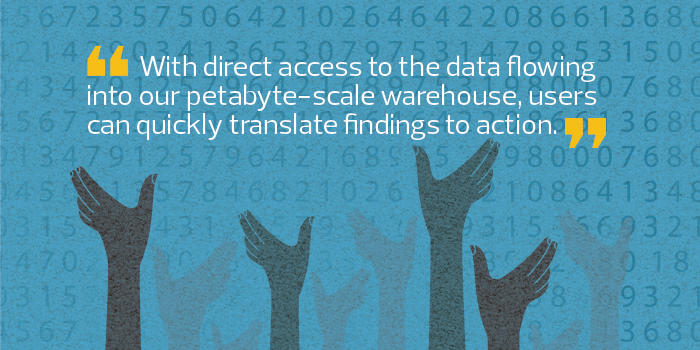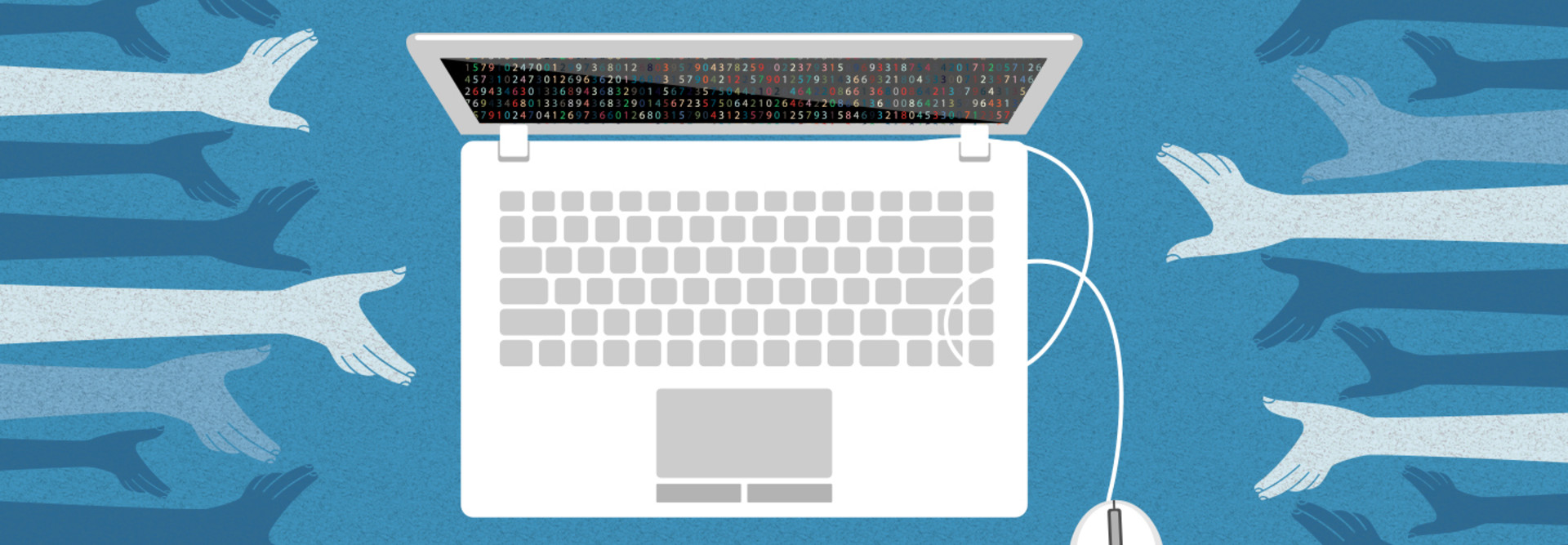Ivy Tech’s Award-Winning Data Platform Puts Staff in the Driver’s Seat
Ivy Tech Community College is decentralized and diverse, with more than 100 campus and satellite locations serving 175,000 students. Yet we have empowered our community to get fast, actionable insight from the massive volume of data we generate. We did that by developing a self-service analytics platform (NewT, short for “New Thing”) to deliver data on demand to administrators, staff, faculty and other users.
Currently, 4,000 members of the Ivy Tech community can access, query and analyze data and run their own reports, without any help from IT. That’s 50 percent of our employee base, and we’re on our way to extending these capabilities to another 5,000 users. With direct access to the data flowing into our petabyte-scale warehouse, users can quickly translate findings to action. That, in turn, gives the college the kind of business benefits that deliver competitive advantage.
Soon after we launched, for example, a report identified a number of students who had met the criteria to graduate, but hadn’t completed the paperwork that would set the conferral process in motion. Because the administration lacked a cohesive view of relevant data, it hadn’t awarded some 2,800 degrees and certificates. Thanks to NewT, Ivy Tech added a sizable number of graduates to its rolls and, because the state funds institutions based on graduate numbers, collected additional revenue. In addition, we now use predictive analytics to identify students at risk of failing so staff can intervene early.
For IT leaders considering Big Data projects, we offer recommendations based on our lessons learned.
SIGN UP: Get more news from the EdTech newsletter in your inbox every two weeks!
Data Analytics Tools Require Flexible Thinking
When we started this journey six years ago, we knew what we wanted: a single platform for employees to get answers to questions, rather than having to ask IT or run Excel pivot tables on their own. The data had to be intuitive, relevant to individual job responsibilities, interactive and presented through a single, user-friendly interface. Further, we wanted to give users real-time access, analysis and reporting capabilities that delivered value to the business.
As to how we’d get there, we were open to possibilities. We issued an RFP, but ultimately decided to build NewT ourselves, taking advantage of the rich features and on-demand pricing available from Platform as a Service providers. By leveraging our cloud provider’s data warehousing platform and a business analytics visualization software program, we realized promising returns from the outset. The price tag? About $3,000 per month.
Show Users What’s Possible with Data
For NewT to succeed, top-down and bottom-up buy-in was critical. The data strategist team got good traction when they trained 3,000 people within the first six months of launch. In 2016, when Ivy Tech’s new president came on board, buy-in accelerated.

On our old platform, 225 people (just 2 percent of our employees) had the capability to run reports. In an IT environment running 1,200 applications, we needed an adaptable, scalable way to curate data. These validated data sets would include specific data points pulled from the 100 million rows flowing into our warehouse daily and present them in a format users understood. To date, we’ve created 50 collections targeting various business functions and user roles.
Our biggest report, which previously took hours to run, now takes seconds. Speed matters, and not just for quick decision-making. When users have to wait three days for answers, they don’t ask many questions. If they wait four hours, they may ask a few more, but not enough to drive significant business decisions. With our previous system, users occasionally gleaned a key insight — that single silver bullet. But by empowering thousands of users to ask thousands of questions across all our data, we can potentially get thousands of silver bullets, and that helps our employees solve problems every day.
Data hygiene is equally important. But instead of requiring IT staff to clean data that’s already in the warehouse, we shifted the task to the end users responsible for entering data into the source systems that feed the warehouse.
Crowdsourcing data cleansing has paid off. NewT’s expanding uptake inspires users to ensure they input data accurately. They’ve even built reports that help them find bad data so they can fix it before it reaches the warehouse.
Train IT Staff on How Best to Use New Tools
When we opted to run our warehouse and analytics platform in the cloud, our IT team needed to adopt a new mindset and a corresponding toolset. The cloud is a big toolbox, but managing columnar databases and massively parallel processing systems requires different skills from those needed to handle relational databases.
To close the knowledge gap, we sent our engineers to our PaaS provider for training. We also met regularly to brainstorm ways to use the new technologies to optimize results.
Our engineers now get maximum results from that toolset for a minimal amount of money. The way they’ve restructured the data from our enterprise resource planning system for cloud-based storage is a prime example: If we tried to run a report using data stored in an on-premises warehouse based on a relational database management system, it would take hours to chew through 2 trillion rows of data. With our cloud-based warehouse, it takes seven seconds.
Ultimately, we want our team solving student and business problems, not swapping out server hard drives or ensuring that email works. We’ve positioned ourselves to spend most of our time with business users so we understand upcoming initiatives. Only then can we make timely decisions that give Ivy Tech a competitive edge.
Know Analytics Is A Work In Progress
Big Data programs are a process, not a product. Data and technologies built to leverage it are always evolving, so teams managing analytics systems like NewT should embrace a continuing-education philosophy. To that end, we’ve made significant progress on NewT v.2, which, among other enhancements, will be far more intuitive than its predecessor.
Although NewT v.1 has met our considerable expectations, and earned Ivy Tech a Gartner Data and Analytics Excellence award for best self-service analytics system, we’ll always be focused on continuous improvement.
Focus on Creating Straightforward Tools
Institutions that launch successful self-service analytics programs tend to learn hard lessons along the way. Ivy Tech was no exception, but we did avoid one mistake that commonly plagues Big Data projects. Too often, program leads, having studied the Kimball and Inmon methodologies, conform to a standard approach and can’t move forward if they stall. Conversely, we weren’t willing to compromise on our desired outcomes, but we were always ready to trash the playbook to get there. We knew what we wanted and why, and we got creative when we ran into roadblocks.
It helps to remember this adage: Don’t let perfect get in the way of good. Many IT professionals want to build elaborate, elegant systems with extensive features and functionality. Ultimately, they may spend tens of millions of dollars on a platform that end users neither understand nor use. Self-service analytics systems that move the needle are intuitive, user-friendly and affordable.
The bottom line: Business users, who usually must depend on data specialists to get answers to the simplest of questions, are thrilled to have a straightforward system that puts them in the data analyst seat.










